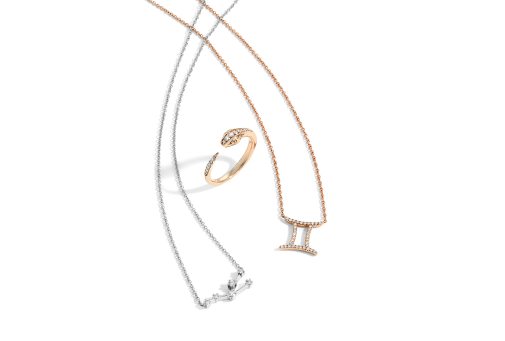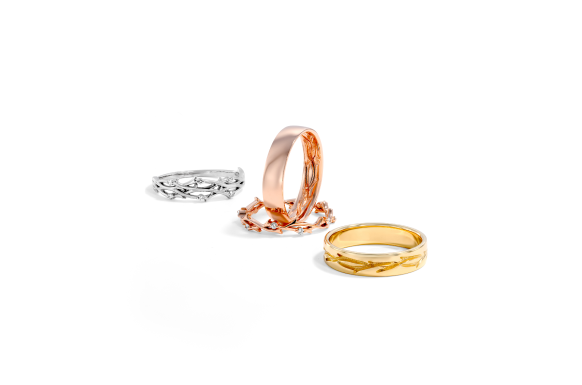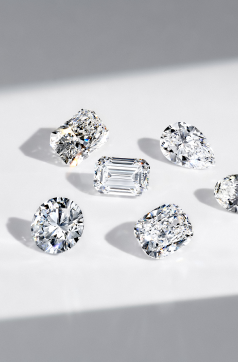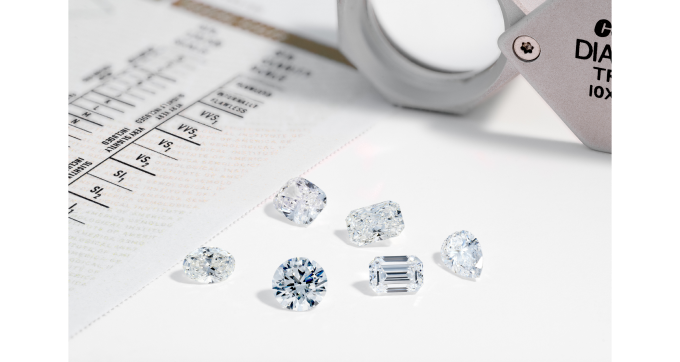Everything You Need to Know About Lab-Created Diamonds
Education Center
Education CenterEverything You Need to Know About Lab-Created Diamonds
Today’s diamond market offers more options than ever, including lab-grown diamonds, which are crafted through innovative, high-tech methods. Instead of forming underground over millions of years, lab diamonds are grown in controlled environments using advanced technology. They’re a more sustainable alternative to their natural counterparts and competitively priced, making luxury more accessible without compromising on quality.
Are Lab-Created Diamonds Real?
The short answer is yes: lab-created diamonds are absolutely real. The longer answer is that there are two types of diamonds: lab-created and earth-mined. They’re identical in brilliance, sparkle, and hardness. In fact, lab diamonds are made of the exact same atoms and have the same physical structure as natural ones.
The only real difference is how they’re formed. Natural diamonds come from deep within the earth, while lab diamonds are grown in high-tech labs using advanced methods that mimic nature. This difference not only makes lab diamonds more affordable, but also a more sustainable choice.
Lab-Grown vs. Natural Diamonds
Lab-grown and natural diamonds are identical in every way. Still wondering what the differences between them are? Let's break it down.
Origins
Lab-created diamonds offer something natural diamonds simply can’t: complete peace of mind. Grown in just a few weeks using advanced technology, they come from controlled environments where working conditions are fair and transparent. This guarantees ethical sourcing and a significantly lower environmental impact. At Keyzar, we make a concerted effort to make sure all of our diamonds are conflict-free. This is a guarantee that always comes with lab diamonds.
Price
Lab-created diamonds offer unmatched value, without compromise. Because they’re produced consistently in labs, supply always meets demand. That means no artificial scarcity, no supply chain delays, and most importantly, no inflated pricing. On average, lab diamonds cost 60–85% less than natural diamonds of the same size and quality, giving you the freedom to choose a larger, more brilliant stone while staying within budget.
Some argue that mined diamonds have better resale value, but that only applies to very large stones. Unless you're investing in a bigger diamond (think $20,000 or more), you’re unlikely to see a significant return. So instead of banking on resale, why not enjoy a bigger, brighter lab-created diamond right now? With lab diamonds, you get the same beauty, brilliance, and lasting quality, for a fraction of the price. See what your budget can really get you by exploring our lab diamond collection.
Let's Get Technical
Diamonds are made in three different ways: earth mined, high pressure-high temperature, and chemical vapor deposition. Let's get into it.
Natural Earth Mined Diamonds
Natural mined diamonds were formed billions of years ago deep beneath the earth's crust. The extreme heat and pressure beneath the mantle crushed carbon atoms together into the shiny, beautiful gems we know and love today.
Then one day, a few hundred million years ago, these prehistoric gemstones hitched a ride on the hot lava express and were pushed up towards the surface via an ancient volcanic eruption. Initially, diamonds were discovered in the rivers and streams of India around the 4th century BC. They have been sought out, traded, and mined ever since.
High Pressure-High Temperature (HPHT)
HPHT diamond formation works by exposing carbon to extreme heat and pressure. A tiny piece of diamond, called a diamond seed, is placed in a high-pressure chamber that’s specifically designed to mimic the extreme conditions deep beneath the earth's crust. The carbon-coated seed may start out as an unrecognizable speck, but it will soon grow into the beautiful crystal structure we love to show off.
Chemical Vapor Deposition (CVD)
The second way lab diamonds are grown is CVD or Chemical Vapor Deposition. This method uses a mixture of chemical gasses to break down carbon atoms and crystalize them. Here hydrogen and hydrocarbon gas (like methane) are mixed in a low-pressure vacuum chamber. This specialized chamber converts some of the hydrogens into atomic hydrogen.
Frequently Asked Questions
Do Lab-Grown Diamonds Hold Their Value?
Lab-grown diamonds usually depreciate after purchase, just like natural ones. However, they cost 60–85% less upfront, making them a smarter value for those buying for meaning, not resale. While the lab diamond resale market is still growing, their wide availability keeps prices accessible. For most, it’s about the beauty, not the return, and lab diamonds deliver on both.
Are Lab-Grown Diamonds More Ethical?
Lab-grown diamonds are an ethical and eco-friendly option, and for good reason. They avoid conflict sourcing and use far less land and water than mining. While production does require energy, many manufacturers are shifting to renewable sources. For the most sustainable choice, look for brands like Keyzar, which follow carbon-neutral practices.
Do Lab-Grown Diamonds Get Cloudy?
No, lab-grown diamonds do not get cloudy over time. They have the same chemical structure and durability as natural diamonds, meaning they maintain their brilliance indefinitely. However, just like mined diamonds, they can accumulate dirt, oil, and residue, which may dull their sparkle. Regular cleaning with a gentle jewelry cleaner or mild soap and water keeps them looking as brilliant as the day you bought them.
What are the Downsides of Lab-Grown Diamonds?
While lab-grown diamonds offer affordability, sustainability, and ethical advantages, they do have some drawbacks. Their resale value is lower due to increasing production and market supply. However, if you prioritize cost savings, ethical sourcing, and identical beauty to natural diamonds, lab-grown diamonds remain an excellent alternative for engagement rings and fine jewelry.
Conclusion
Lab-created diamonds are a brilliant blend of science and style. They’re identical to natural diamonds in look, feel, and sparkle, just without the billion-year wait or the hefty price tag. Grown in controlled environments with no mining required, lab diamonds are a more eco-friendly choice that’s easier on the planet and your budget. You get more size, more quality, and more shine for less. If you’re ready to shop now, check out our collection of lab diamond engagement rings!



